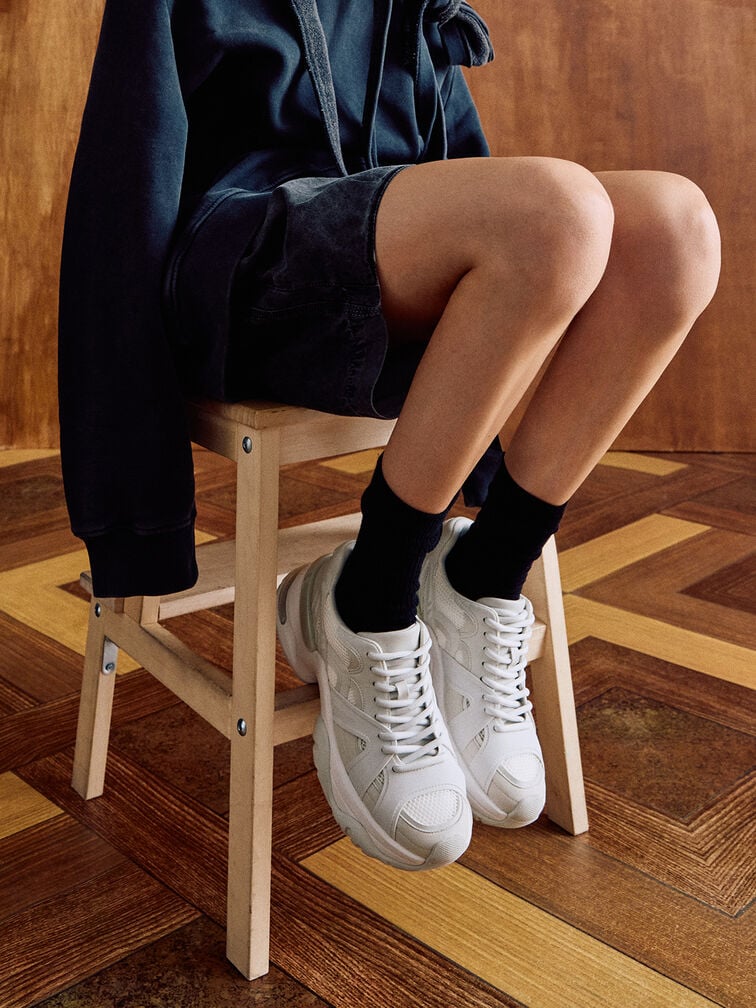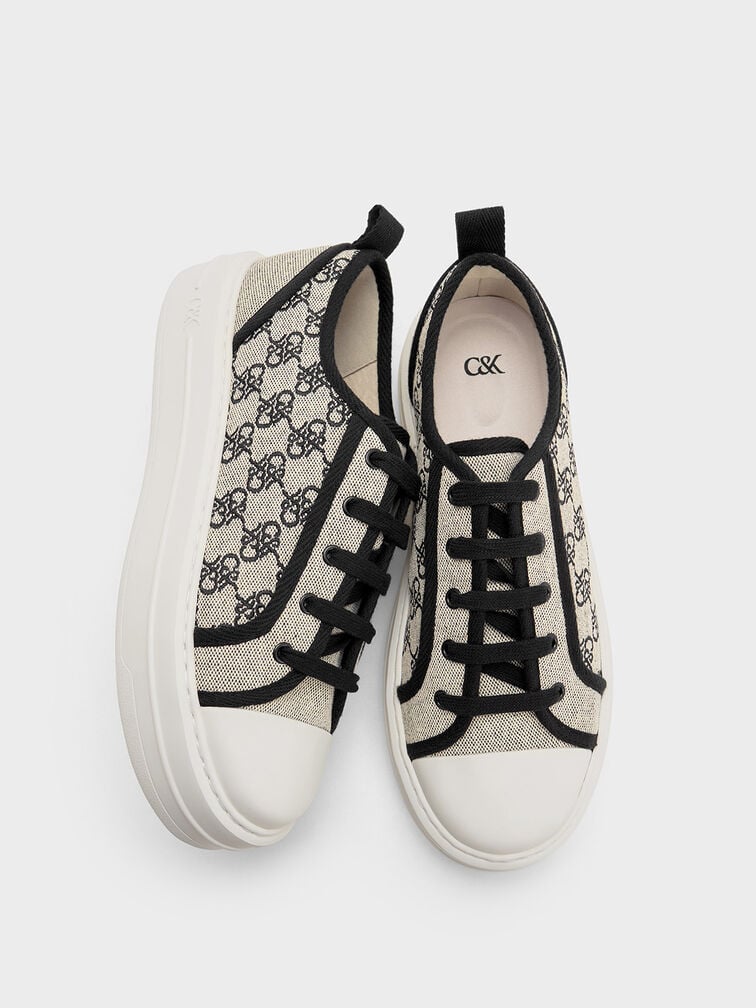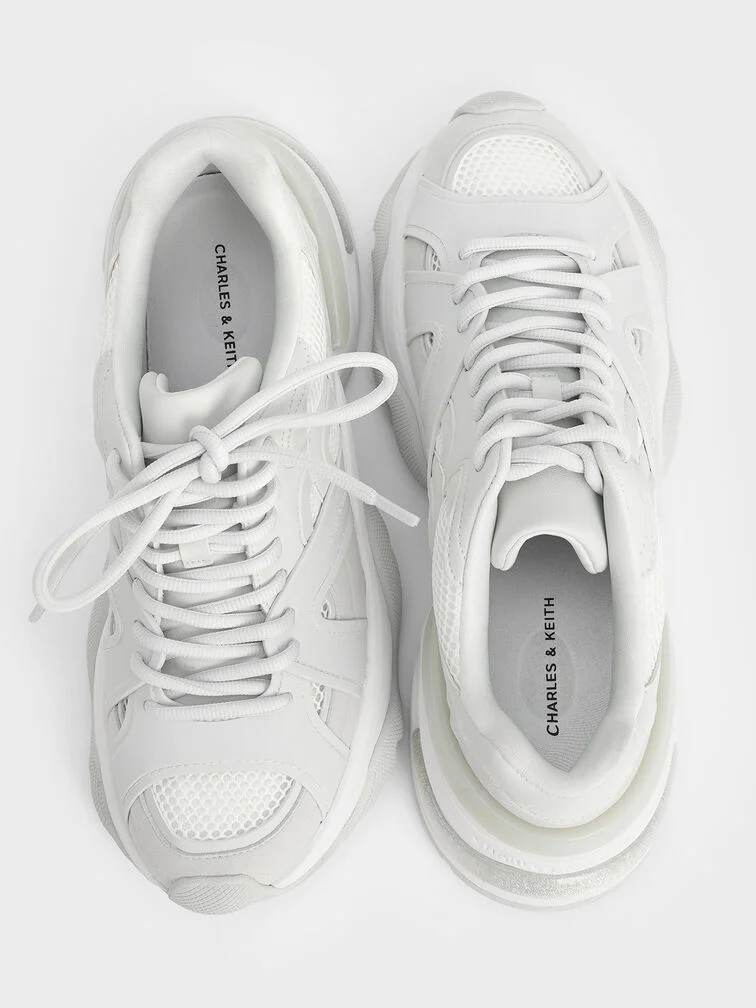A Complete Guide: How To Clean White Trainers
Looking to clean your white trainers? In this guide, we will explain why it is important to care for your trainers, before breaking down the cleaning process in easy-to-follow steps. We will show you how to clean the individual components of the shoes, as well as elaborate on the care that each type of trainers needs.
Why White Trainers Need Extra Care

Well-loved for their versatility, white trainers are a staple in modern wardrobes. With regular use, however, they can get scuffed and stained. Since these marks show up easily, it is important to clean white trainers with care to restore them to their original pristine state. Apart from treating individual stains, investing in the regular maintenance of your white trainers can help extend their life span in your wardrobe.
How To Clean Different Parts Of White Trainers
Whether you are treating a stain or doing a thorough clean, each part of the trainer will require different cleaning techniques and products. The components of a pair of white trainers are usually made of different materials, so it is important to identify the materials as much as possible before proceeding with the cleaning.
Laces
To clean your laces, start by removing them entirely from the trainers. Soak them in warm, soapy water to dissolve the dirt, before letting them dry completely. If there are any stains along the laces, you can scrub at them gently with a toothbrush. For lighter stains, you can also put them in a mesh bag and wash them in the washing machine.
Tongue
The shoe tongue is the strip of material that sits right underneath the shoelaces. It is usually made of a soft, breathable material, since its function is to protect the feet from rubbing against the shoelaces. To clean it, begin by removing the shoelaces, before placing a clean rag underneath the tongue to protect the rest of the shoe. You can then wipe it with a microfibre cloth that has been dipped in a solution of soap and water. Alternatively, use a cleaning solution that is specifically made for the material of your shoe tongue.
If the staining is more apparent, you will have to use stronger cleaning agents. You can create a paste with equal parts baking soda and vinegar, or dilute bleach with water. Using a toothbrush, work the solution or paste into the stains and let it sit for a few minutes. Follow up with a damp cloth to wipe away any residue, before allowing the shoe tongue to air-dry completely.
Stitching
Some trainers feature stitching along the outer soles. Since this is a hard-to-reach area, it is best to use a brush to loosen any dirt — either a stiff brush or toothbrush will work. If the stains are more persistent, apply a solution of baking soda, soap and water to brighten the area.
Outsoles
As they are the parts of the shoes that are in constant contact with the ground and other outside surfaces, outsoles get dirty the quickest. To clean them, there are a few options — you can use gentle cleansing wipes, a small amount of toothpaste, or a homemade paste made with baking soda and vinegar. For each of these methods, it is best to follow up with a damp cloth to wipe off any residue. Alternatively, you can also use a melamine sponge — otherwise known as a magic eraser — to remove any scuff marks. Melamine sponges contain a compound that can penetrate stains and lift dirt, and they only need to be activated with water.
If your shoes are frequently exposed to the sun and heat, the outsoles might oxidise and turn yellow. To whiten them, apply a paste of equal parts hydrogen peroxide and baking soda to the soles and leave them out in indirect sunlight for a couple of hours.
Insoles
Located on the insides of the shoes, insoles are there to provide cushioning and arch support. It is important to clean the insoles regularly to prevent a buildup of bacteria in your trainers, which can cause unpleasant odours. To clean them, remove the insoles and leave them to soak in a solution of warm water and mild soap. Gently scrub with a brush to loosen any dirt, before rinsing them with clean water. It is best to let them air-dry afterwards, as drying them with heat might cause shrinkage.
How To Clean White Trainers By Material
Since there are many types of white trainers, it is important to differentiate your cleaning methods based on the material of the shoes. While there are general cleaning tips for each type of material, it is still advisable that you check the care guides or instruction labels of your trainers first before proceeding with anything.
Canvas Trainers

As breathable and durable as canvas is, it still has to be handled with care. Where there are stains and scuffs, spot-treat them with a baking soda paste or mild soapy solution. Warm water should be used, but it is important to avoid hot water as that can cause shrinkage.
Alternatively, you can consider washing the shoes in the washing machine. Check your care label before proceeding with this method, as there might be detailed instructions and recommended wash settings from the manufacturer. Some care labels might even advise against machine-washing. Before putting them in the wash, ensure that the laces and insoles have been removed. The trainers should be washed in a mesh or cloth bag, and it is good practice to load a few towels or sheets into the drum to help reduce the tumble impact and cushion the shoes. You should also opt for a gentle wash cycle with low-temperature water and no-spin settings.
Leather Trainers

Since leather is more porous by nature, it is prone to cracking and discolouration. It is best to clean leather trainers with a dedicated leather cleaner, but soapy water also works in a pinch. Dab the cleaning solution onto the shoes with a microfibre cloth, working in small, circular motions to prevent water streaks. Leather trainers should never be dunked in water, as this will strip the leather of its oils and cause it to become dry and brittle. Let the trainers air-dry completely after cleaning, before following up with a leather conditioner to nourish the leather. To freshen up the shoes, you can also consider using a thin layer of white shoe cream to tackle any discolouration.
Mesh Trainers

Mesh is a delicate material, as its woven construction can get snagged easily. To clean it, use gentle motions and a soft-bristled brush that has been dipped in a mild soapy solution. It is important to avoid vigorous scrubbing, as doing so will cause tearing and fraying. For more stubborn stains, you can also use a bleach pen. After cleaning your trainers, let them air-dry — you can also stuff them with newspaper or towels to help them retain their shape as they dry.
Suede Trainers
The fuzzy, napped finish of suede can trap dirt and absorb moisture. Cleaning it would require extra caution, as it is softer than traditional leather and is more susceptible to damage. For a general clean, brush the exterior to loosen any dirt and go over any stains with a suede eraser. A washcloth dipped in a small amount of white vinegar can help get rid of more resistant stains. After cleaning and letting the trainers air-dry completely, restore the nap of the suede by brushing it over with a stiff-bristled brush. To truly protect your suede trainers, you can finish off with a coat of waterproofing spray. It is crucial to note that suede shoes should never come into direct contact with water or harsh cleaning agents, as these will penetrate the porous material and potentially cause irreparable damage. Discover more care tips for suede shoes.
How To Keep White Trainers Clean For Longer
To avoid going through the trouble of cleaning heavily-stained shoes, paying attention to the upkeep of your white trainers is important. When storing them, keep them away from direct sunlight as much as possible to prevent oxidisation. They should ideally be stored in breathable cloth bags, especially if they are not being worn regularly. To prevent mould from growing on your trainers, store them with moisture-absorbing silica gel packets.
It is also good practice to switch out your shoe options throughout the week. Allowing your trainers to dry out in between wears can slow down bacterial growth and prevent odours.
Generally, stains should be addressed immediately before they seep into the surface of your trainers. You should aim to clean them at least once every fortnight, as cleaning them regularly prevents dirt from building up and ensures that your trainers look fresh and presentable. Apart from investing in a targeted cleaning routine for your trainers, consider investing in protector sprays to keep them clean for longer periods of time.
Frequently Asked Questions About Cleaning White Trainers
Can I put white trainers in the washing machine?
Yes, but only if the trainers are made of cloth, canvas or polyester. Before putting your trainers in the wash, remove the laces first and place them in a mesh bag. When in doubt, consult the care label on your trainers.
How do I dry my white trainers?
To be safe, you should never dry your white trainers in the dryer. The high heat might not only cause your shoes to shrink and distort, but also damage the glue holding the shoes together and cause them to fall apart. Instead, they should always be air-dried. To speed up the drying process, you can wrap them up with a towel to wring out any excess water, before stuffing them with newspaper to help absorb the remaining moisture.
Can I use bleach on white trainers?
Yes, but it should be diluted with water. It is also important to rinse the bleach off the shoes completely after the cleaning process, as bleach residue can oxidise and cause white trainers to turn yellow. Since bleach is a harsh chemical, it is recommended that you conduct a patch test on a less-visible part of your shoes first, before proceeding to clean with your solution.
How do I prevent yellowing?
When stains show up on your white trainers, attend to them as soon as possible to prevent them from embedding into your shoes and leaving a yellowish mark. At the end of the cleaning process, it is also important to remove all the residue off your trainers to prevent oxidisation. As a rule of thumb, your trainers are less likely to turn yellow if you dry them in the shade, away from direct sunlight.
When should I go for professional cleaning?
If there are persistent stains and strong odours after conducting your at-home cleaning routine, you can consider sending your trainers for professional cleaning. You can also opt for this if your shoes are heavily stained, or if they require special care because of their construction.
Can toothpaste clean white trainers?
Yes. Be sure to use an all-white toothpaste and use small circular motions to apply it to the trainers. Let them sit for 15 minutes before wiping away the dried toothpaste with a damp cloth. Repeat as needed until the stain lightens. It is generally recommended that toothpaste is used on rubber components, like the outsoles of the shoes. If you are using this cleaning method for the first time, you can test it on an inconspicuous part of the shoes first to ensure it works as intended.
With their versatility and timeless appeal, white trainers are a true wardrobe staple. Taking the time and effort to care for them properly will help extend their life so you can get more wear out of them. If you are looking to add a new pair of white trainers to your collection, you can explore our line-up to find the perfect pair for you.